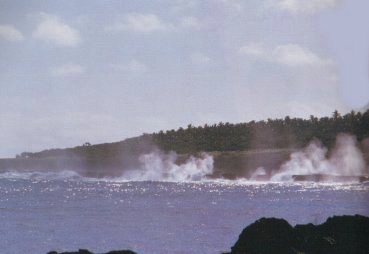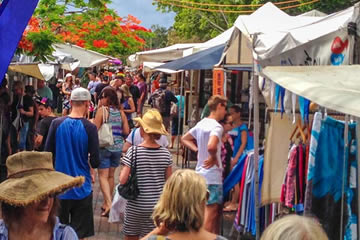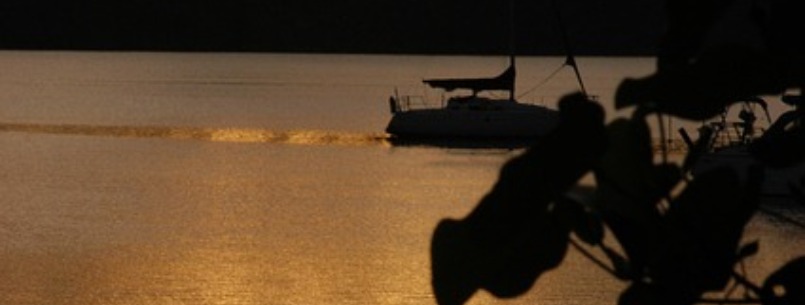2024 Tonga Visitors Guide
Tonga is a miniature Kingdom, made up of a group of 170 islands, 45 of which are inhabited. They form a necklace just west of the International Dateline. The main island of Tongatapu in the south is the home of the Kingdom’s capital, Nuku’alofa. North lies the Ha’apai group, a chain of low lying atolls surrounded by clear turquoise waters. Beyond Ha’apai lies the Vava’u group, a paradise of lush tropical landscapes, a deep water harbor, rock islands, and limestone caves.
CAPITAL AND MAJOR CENTERS
Nuku’alofa is the capital and home of the Royal Palace. Other major centers are Eua Island, an ideal retreat for hikers, adventurers and naturalists, and Vava’u island which has two beautiful beaches on the main island and a scenic drive around the west coast with stunning views of Port of Refuge Harbour and the numerous outer islands.
 Ha’apai village is a favorite with visitors who are invited to stay in the village and participate in all aspects of village life from ‘kava’ ceremonies, feasting and dancing to hunting ‘feke’ octopus with village fisherman in outrigger canoes.
Ha’apai village is a favorite with visitors who are invited to stay in the village and participate in all aspects of village life from ‘kava’ ceremonies, feasting and dancing to hunting ‘feke’ octopus with village fisherman in outrigger canoes.
THE PEOPLE
The majority of Tonga’s 96,000 people live on Tongatapu. Polynesian by race they speak Tongan and English. In the traditional view of ancient Tonga, the islands were first settled about 3500 years ago as part of the movement of seafarers from the western islands of Indonesia to the Pacific Islands beyond New Guinea. With their movements determined by the discovery of the distinctive Lapita pottery, the Lapita people continued out into the western Pacific, beyond the already inhabited Solomon Islands and Vanuatu archipelago to the uninhabited islands of Fiji, Tonga, and Samoa. Archaeologists speculate that the Lapita people existed for about 1,000 years and then suddenly the use of pottery died out and the technology was lost.
HISTORY
Archaeologists claim Tonga has been inhabited since the 5th century BC. It was first discovered by two Dutch navigators in 1616. They were followed by Tasman, Wallis, Captain Cook, Bligh of the Bounty whose sailors mutinied in Tongan waters, and the missionaries. Today the Kingdom of Tonga is ruled by King Taufa’ahau Tupou IV who reigns as a constitutional monarchy. Formerly a British protectorate, Tonga gained its independence in 1970 and is now part of the British Commonwealth. From 1500 B.C. to 500 B.C. an empire of pottery-making people spanned the western Pacific and it is these people that are considered to have made the megaliths of Tonga, including the building of the city of Mu’a and Tonga’s great Trilithon. During this period, it is more likely that the Tongans never lost the ability to make long ocean journeys. Indeed, evidence indicates that Tonga was the central naval base for a pan-Pacific empire that existed for thousands of years and had only fallen into decline a few hundred years before European contact.
NATURE
Vegetation is typically South Pacific with masses of hibiscus and frangipani, coconut groves, pandanus palms and banana plantations.
Not far from Nuku’alofa hundreds of flying foxes cling to high trees at Kolovai. Frigate birds are common, as are the Pacific golden plover, the Pacific black duck, swiftlets (Pacific swallows) and the blue-crowned lorikeet.
Tonga was the first Pacific Island country to create marine parks or sanctuaries. Four such parks now exist, rich in fish, coral and marine life.
THE SIGHTS
There are miles of white, sandy beaches fronting clear lagoons which hold some of the most beautiful and varied reefs in the world. The rocky terraced coastline at Houma features one of the South Pacific’s most impressive natural spectacles. Huge waves crash onto the coral rock sending water spouts 60ft or more into the air. At the lagoon edge are the villages of Mu’a and Lapaha with several fascinating historical sites such as the Langi tombs at Lapaha.
GETTING AROUND
On Tongatapu, Vava’u and Eua the main forms of transport are bus, taxi, rental cars and passenger ferries.
FOOD & ENTERTAINMENT
A visit to the Tongan National Centre is recommended for their feasts and entertainment. Most hotels and resorts also provide Tongan feasts and traditional dancing at least once a week. Nuku’alofa the capital, has several authentic restaurants including French, German, Indian, Chinese, Korean, Japanese and Italian.
ACTIVITIES
Tongans play rugby, soccer, cricket, netball, volleyball, basketball, golf, tennis, and traditional indigenous games. Water-based activities include diving, fishing, snorkeling, yachting, kayaking, and whale watching. Tongan handicrafts are some of the best to be found in the South Pacific. The best retail outlets are the Langa Fonua, the Friendly Islands Marketing Co-operative, the Talamahu Market and the Tongan National Centre.
DIVE
Pristine and even undived reefs are not difficult to find in Tonga since 125 of its islands are uninhabited. Access to the islands is through the southern island Tongatapu, where Royal Sunset Scuba Diving on Atata Island shows off the rich coral reefs. However, the best diving is found in the central Ha’apai and northern Vava’u groups.
Port of Refuge in Vava’u is a deep sheltered harbor extending well inland. Two imperators, Beluga Diving and Dolphin Diving take visitors to currentless shallow dives in the harbor or to spectacular walls and reefs outside the entrance on the loaf-shaped islands that herald the open ocean. The Glen McWilliams lies at the bottom of the harbor not far from the main wharf. Intact, upright and covered in marine life it is a spectacular introduction to wreck diving.
Beds of yellow sea fans can be found at Tuangasika Island along with an extensive bommie coated with anemones and their associated down fish. In places the reef wall is riddled with lobster filled caves, some containing air bubbles in the roof large enough to surface into, such as the one at Mariners Cove. During winter and spring, divers can be assured to at least hear, if not see, humpback whales that make the clear waters their calving and mating grounds.
Night diving is very special. Slipper lobsters abound, juvenile Lion Fish with their beautiful livery are found nestled in the coral, and the shy Flashlight Fish with their luminous light organ below the eye, drift about.
The live-aboard yacht Impetuous is operated by Royal Sunset Island Resort and is available to explore the southern central and northern islands.
FACTS AT A GLANCE
- CLIMATE: Pleasant and slightly cooler than most tropical areas. Annual temperature of 23 degrees C.
- CLOTHING: Casual clothes are recommended for most occasions.
- ELECTRICITY: 240 VOLTS.
- TIME ZONE: 13 hours ahead of GMT. AEST +3 hours.
- CURRENCY: The Tongan dollar or pa’anga equals 100 senitis (cents).
- VISAS & HEALTH Passport and outward ticket. Airport tax T$20 for all international departures, payable at the airport.
GETTING THERE
Air New Zealand, Air Pacific, Polynesian Airline and Samoa Air.
Tongatapu
This is the kingdom’s largest island. Its name means ‘sacred land’ or ‘sacred south’ and it is where the majority of visitors come. It is here that the international airport of Fua’amotu is situated along with the major shipping facilities for international passenger and cargo vessels, as well as inter-island craft and cruising yachts. A relatively flat island, it has a network of roads which make it easy to get around, whatever transport you choose. Most of Tonga has bitumen roads. Although not particularly large, Tongatapu requires two full days to explore since its attractions consist of historical sites and beautiful beaches on the eastern half of the island and natural landmarks on the western side.
Ha’atafu Beach is at the western extremity and there are three roads leading across the island to it. The first route is the Hihifo Road which runs from Queen Salote College via the villages of Puke, Fatai, Nukunuku, Teekiu, and Masilamea. Tongatapu narrows considerably as it runs west into a peninsula-like section which is called the Kolovai District. It was once called Hihifo and figured frequently in the history of Tonga. The second route is Taufa’ahau Road and runs across the middle of the island, through Haveluloto, almost a continuation of the capital, thanks to urban sprawl. It skirts Fanga Uta Lagoon until it reaches Vaiola Hospital completed in 1971.
Opposite Vaiola on the banks of the lagoon is the Tongan National Centre, a complex of ten buildings of various traditional sizes and an open-air amphitheater. The large village of Pea en route is an extremely important center in historical terms for it was here that opposition to the efforts of King George Tupou I to forcibly turn Tonga into a unified, Christian kingdom was strongest.
The third route is Liku road which runs all the way from the island’s western to its eastern tip through the village of Tokomololo. Proceed down one of the lanes which lead to the coast and you will find Keleti Beach Resort, a collection of fales (thatched houses) overlooking a superb small beach with dramatic, slightly uplifted fringing reef. The formation creates a blowhole effect when the tide and wind are right.
Tongatapu’s eastern section is regarded by many as the more interesting half of the island since it has several beaches and the ancient burial site of the Langi Tombs, some 28 royal burial sites named for their terraced style construction. Tradition has it that the massive stones from which they were constructed were brought from Uvea (Wallis Island) hundreds of kilometers to the north.
The Ha’amonga structure nearby has impressive statistics and has been compared to Stonehenge in England. It is made up of two vertical stones with a horizontal stone connecting and morticed into them. The upright portions are said to each weighs between 30 and 40 tonnes.
Captain Cook’s landing place where he used to sit under a Banyan tree while watching the ceremony of the firstfruits as the guest of Pau, the Tu’i’Tonga is marked by a park and at Anahulu beach there are some remarkable limestone caves complete with stalactites and freshwater pools in which to swim.
Accommodations in Tongatapu
INTERNATIONAL DATELINE HOTEL
A mere ten-minute walk from the capital, Nuku’alofa, brings you to the lush tropical surroundings and prime waterfront location of the International Dateline Hotel. The hotel complex comprises two conference rooms with full business facilities, swimming pools and 76 air-conditioned guest rooms which feature tea and coffee-making facilities, refrigerators, direct-dial telephones, music and views of the magnificent deep water harbor. Several rooms can also interconnect to form family suites.
For a taste of Polynesian culture, the fully licensed restaurant serves a wonderful selection of local delicacies in addition to international a la carte cuisine with imported wines. A spectacular Tongan floor show every Wednesday and Saturday nights provides an exciting taste of ancient Tongan culture for dinner guests. Try the new Euro-Asia Restaurant and Gourmet Lounge at the nearby Queen Salote Memorial Hall.
Crystal clear waters, beautiful white sand beaches and excellent fishing appeal to guests who prefer a relaxing vacation. For the more active visitors, golf, horse riding, snorkeling, canoeing, as well as sightseeing tours to historic sights such as the tombs of the 13th century Kings and Queens, and the Ha’amonga Trilithon – the oldest archaeological structure in the islands – can be arranged by the tour desk staff. Evening tours that include the famous Hina Caves and traditional Tongan feasts are also popular activities.
Nuku’alofa has exclusive shopping, car rental, and yacht charters, while the in-hotel shop offers a fine range of duty-free goods including coral jewelry, perfume, electronic equipment, local carvings, tapa cloth and oven wares at some of the cheapest prices in the Pacific. The friendly warmth and hospitality of Tonga is reflected in the hotel staff who are dedicated to making your vacation both enjoyable and memorable.
PARADISE INTERNATIONAL HOTEL
Located on Vava’u, 1.5 kilometers from Neiafu, the capital, the Paradise International Hotel features deluxe suites which are situated on lush green slopes. From these suites, guests have magnificent views of the unspoiled Port of Refuge Harbour. The units are air-conditioned and most suites have two double beds, a lounge suite, a writing desk, a refrigerator, tea and coffee-making facilities, and a large bathroom. Economy rooms are also available.
SPECTACULAR HARBOUR VIEWS. Sunbathing, swimming, sailing, windsurfing, water skiing, shell collecting, fishing, scuba diving, horse-back riding, exploring the islands, harbor cruising, and shopping are some of the alternatives to simply relaxing at the poolside bar. During pre-dinner cocktails, visitors are serenaded by the local band as the sun sinks slowly behind the swaying palm trees. Then it’s on to sampling local delicacies in the hotel, restaurant or at a traditional feast.
Vava’u
Vava’u is a raised coral island, as is Tongatapu and consists of one large island and as many as 40 smaller islands. Tradition says that the mythical hero Maui who fished both islands from the sea, put a little more effort into Vava’u which is a big island rising 204 meters above sea level with a stunningly beautiful dramatic coastline. Approaching Vava’u by sea is a special experience as you weave through the maze-like scattered islands to the sheltered Port of Refuge.

Neiafu is the capital and is the second-largest town in Tonga. It has limited accommodation and still resembles a late 19th-century Pacific frontier town with limited one-story building, winding streets, limited motor traffic, and trade stores containing everything from canned mackerel, cotton piece goods to cane knives. The road which snakes through the township of Neiafu has spectacular views of the harbor, with the Catholic mission occupying one of the most commanding locations in the township. From the center of town, you can walk in almost any direction to places of interest. To the south, the road leads to a peninsula and the village of Toula. At the shore near Toula is a large cave which contains a freshwater pool. In the opposite direction from the town, you come to the village of Utulei and on up the hill to Talau, a flat-topped hill that dominates the western end of the harbor. Legend has it that Talau was once much taller, but its peak was stolen one night by a devil who intended to remove it to Samoa. He was intercepted by a Tongan devil who caused him to drop his prize in the bay. The stolen peak of Talau thus became tiny Lotuma Island.
Picnic day excursions and yacht charters are made to unspoiled castaway islands which often have magnificent shells. Diving tours to nearby shipwrecks and caves are popular because in the clear, crystalline water visibility extends to 30 meters.
EUA ISLAND
This is Tongatapu’s sister island eight minutes away by plane and three to four hours by boat. It’s 87 square kilometers with a population of some 4,500 people descended from evacuees from Ata in the 19th century when that island was blundered for labor by Peruvian vessels. There are also descendants from Niuafo’ou which was evacuated following a volcano eruption. No roads run around Eua, for it is quite rugged with tracks through the forests to the eastern coast which is lined by cliffs ranging from 33 to 133 meters in height dropping to caves and chasms gouged by strong wave action. There is only one guest house on Eua so visitors are advised to book accommodation well in advance.
HA’APAI GROUP
This is the name given to the island and islets, reefs and shoals which make up the central group of Tonga’s three major island groups. There are at least three dozen islands in this group, although populations are recorded on only seventeen of them. The majority of the islands are quite flat with white sandy beaches and fringing reefs. Lifuka and Foa are the two largest islands in the group with a population of 4,300 people between them and with very few tourists. Within the closed vicinity of Lifuka is tiny Nukunamo and Ha’ano to the north which contains four villages with a total population of 750. To the south is an uninhabited island Uoleva which contains mounds used by ancient chiefs for trapping pigeons. n Uiha there are some interesting relics, including burial grounds of ancient royalty, and ancient monuments.
Accommodations in Vava’u
SANDY BEACH RESORT
Located on Foa, an unspoiled island in the Ha’apai group where pods of dolphins and whales are regular visitors, Sandy Beach Resort is designed for nature lovers who enjoy life’s little luxuries. Twelve large comfortable fales, open to the sea, are set amongst tropical foliage right on the beach. Each fale has a spacious verandah and large tiled rooms cooled by ceiling fans with imported rattan furnishings, built-in wardrobes, refrigerators, and coffee/tea making facilities.
Magnificent reefs lie within swimming distance and the tariff includes the use of snorkeling equipment and Polynesian outrigger canoes. Sandy Beach Resort does not have outboard motors, jet-boats or anything that disturbs the environment or tranquillity. Also included are bicycles, guided bush walks, and airport transfers. Other activities available include horseback riding, scuba diving, game fishing, and sea kayaking.
Enjoy incredible sunsets from the Resort’s terrace to the sounds of classical music before adjourning to the fully licensed restaurant. Entertainment includes cultural shows and kava ceremonies, but there is no television, disco or nightclub and this is definitely not a resort to bring children. Ha’apai has been nominated as a potential world heritage site and for those who truly appreciate nature, Sandy Beach Resort is like no other.
